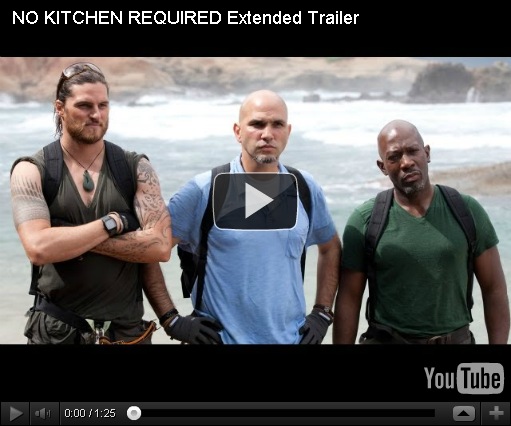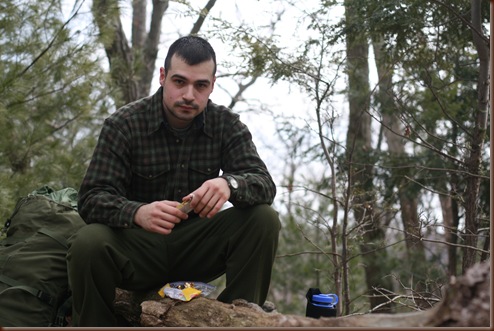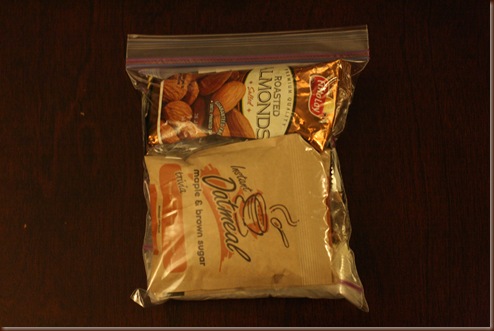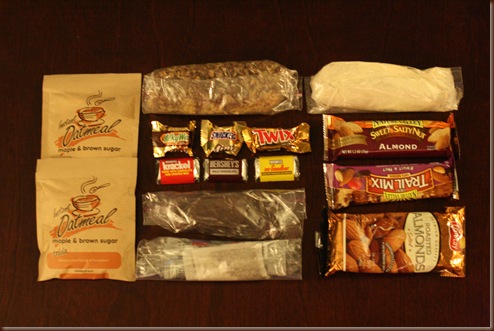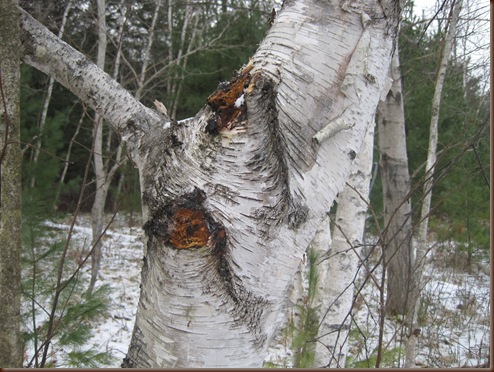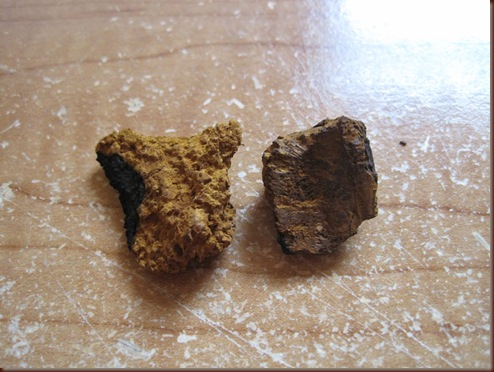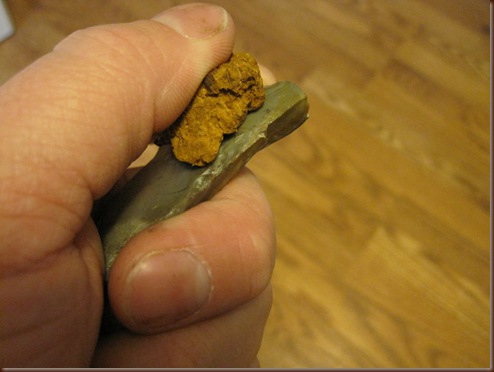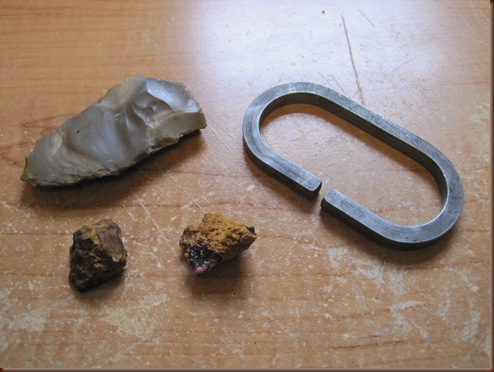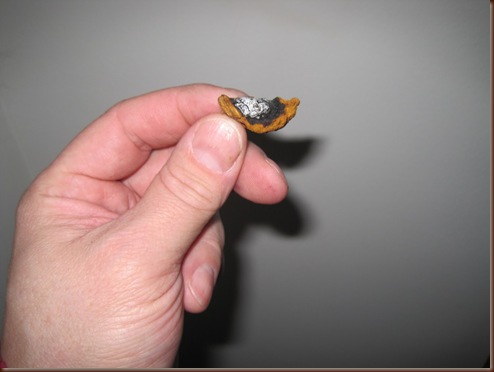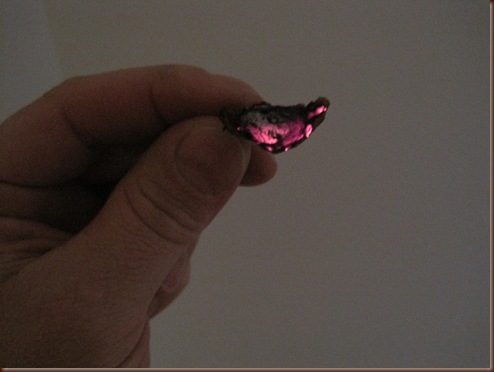Usually I don’t like to document or post about my trips because that’s my time to have fun in the woods, without having to worry about filming or taking pictures. It also lets me leave the rather heavy camera gear at home. In all honesty however, I’ve been getting a bit bored with posting about reviews and studies, so I figured I would try to take some pictures of the outing I did this last weekend, and share them with you.
The plan was to complete roughly a 25 mile roundtrip, starting on Saturday morning and finishing on Monday. The tracks would form a triangle, where on day one I climb to approximately the height of a ridge line, on day two I travel along the ridge line for about 10 miles, and on day three I make my way back to the staring point.
The weather has been all over the place in the last few weeks, swinging from unseasonably warm (in the 30F range) down to single digits (F). The weather forecast for this weekend said it would be around 30F all weekend, which would have made for a wet, but otherwise pleasant trip.
As I’ve mentioned before, when the temperature is just about freezing, the big issue is trying to stay dry. Every time it got slightly warmer, the frost and snow would melt, getting everything wet. For example, here you can see a stream that for most of the year would be nearly dry. Because the snow from that last few weeks had melted however, it was now a good size stream.
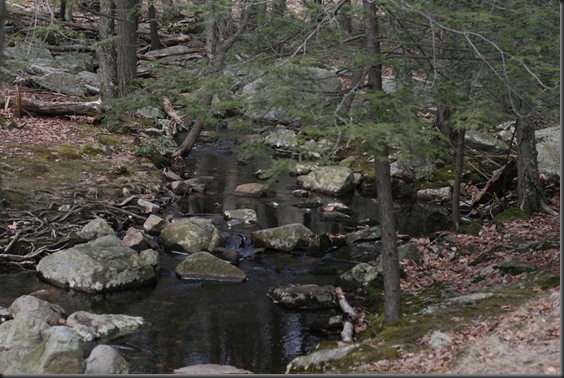
Around noon I stopped for lunch. It was all ready to eat stuff: jerky, nuts, granola bar and candy. I’ll have more on the food in a later post.

I had unfortunately gotten a bit sweaty during the climb. I didn’t put extra clothing during lunch because I wanted to dry off. I knew I would get chilled, but I was going to start moving again soon enough, so I didn’t worry about it. If you think that wool clothing will keep you warm even when it is wet, give it a try. I got pretty chilled.
At some point in the 1700s there were a few small villages in this area, and there was some small scale mining done, mostly for iron. You can still see remnants of the mining operation hidden in the forest.
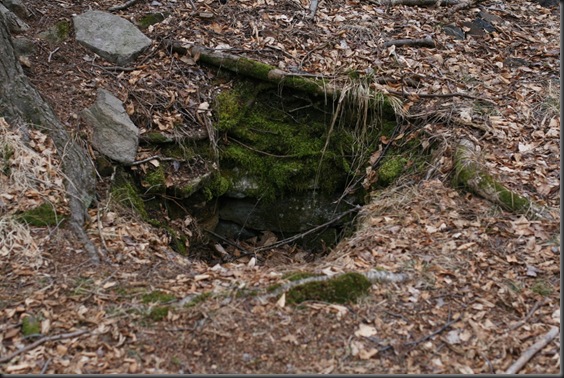
I bumped into an interesting plant on one of the hills. I wish I knew what it was, but my plant identification skills are rather pathetic.
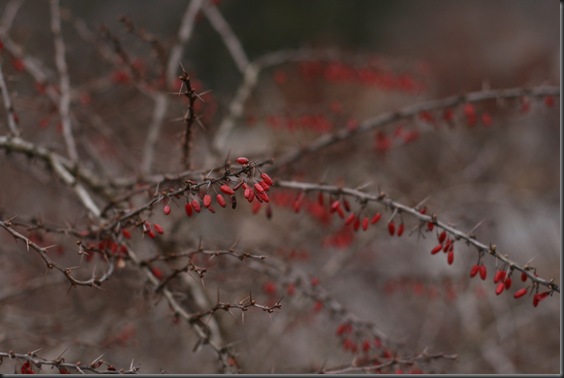
In the afternoon I had to stop in order to refill with water. Because these mountains are so rocky and have such poor soil, it was unlikely that there would be water at the higher elevations, as it all tends to run off very quickly.
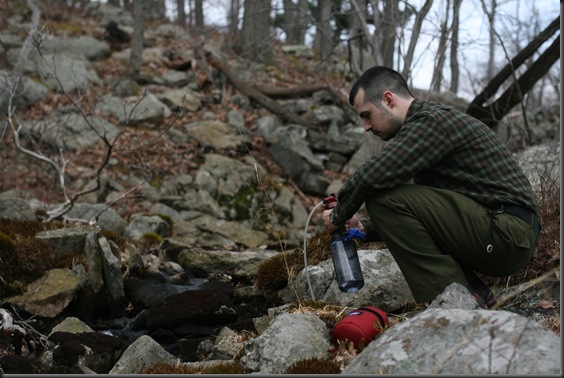
The red container you see on the ground is an insolative cover for the filter. When the temperatures dip below freezing, a wet filter will freeze if unprotected, causing it to crack. As you can see, a lot of the water itself was still frozen.
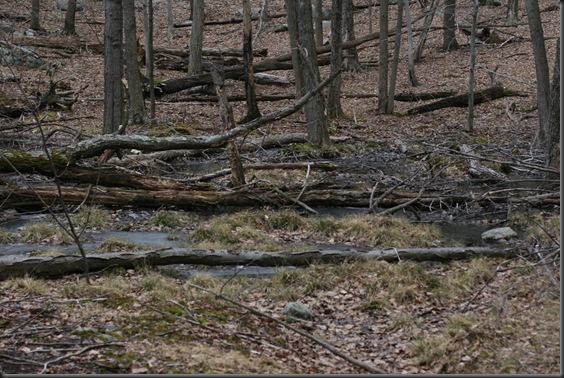
I used the rest opportunity to make myself some Gatorade and have some chocolate for the extra energy boost.
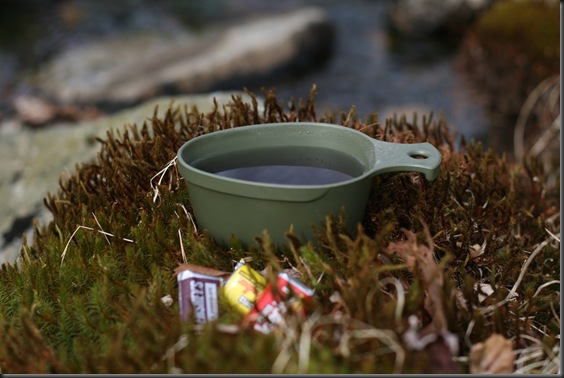
A few more hours of hiking and I was able to set up camp. At this elevation the available wood was mostly pine, which I was not accustomed to working with, but the ease with which it could be worked and would take a flame was a pleasant surprise.
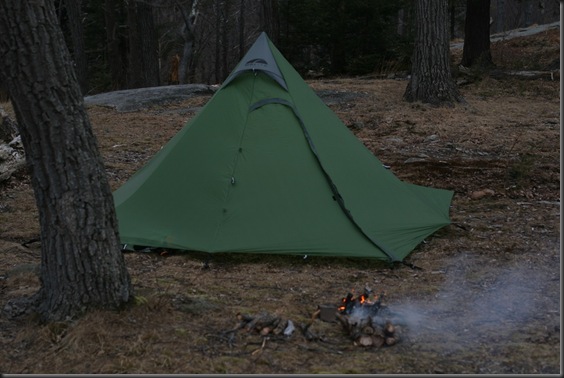
A placed the pot on the fire and warmed up some water. I am not a fan of pot holders (I’m too lazy to make them), so I just put mine on the coals.
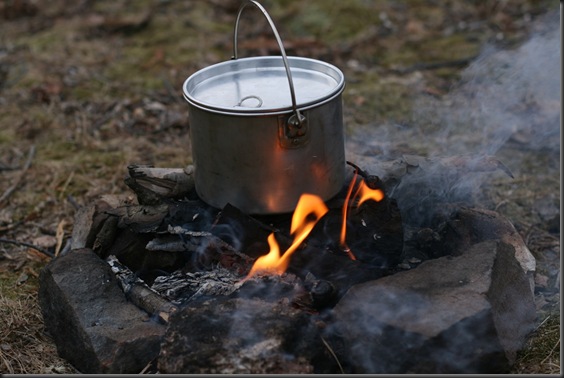
Here you can see me using the pot holder I showed you how to make in a previous video (well, trying to show it while taking pictures with the other hand).
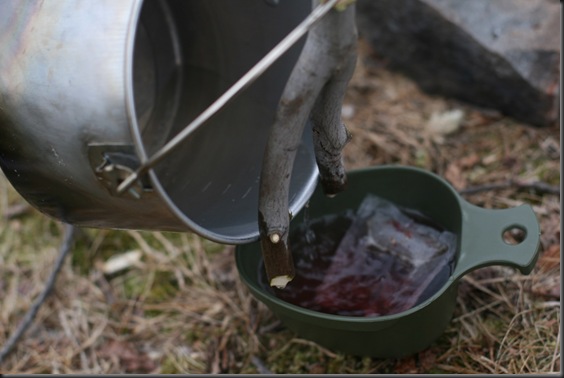
I’m not a big fan of tea, but I’ll drink it during the winter because it’s a much better option than drinking cold water.
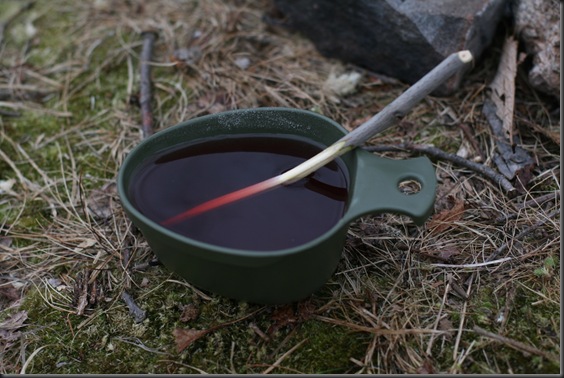
Here you can see me enjoying the tea while waiting for dinner to cook-some rice and dehydrated ground beef. The fancy contraption on which I am sitting is just a plastic bag. It doesn’t provide any insulation, but it is lightweight and keeps me dry. I like the Hefty bags because they stretch more and don’t rip as easily.
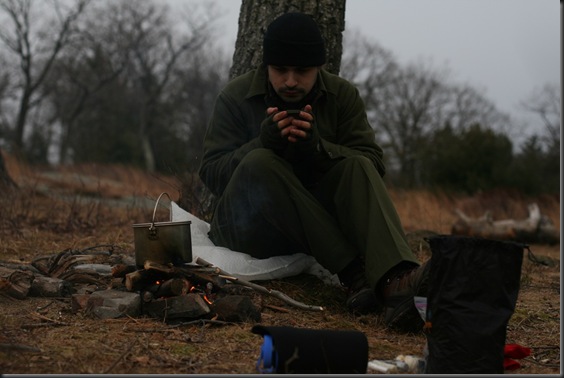
Unfortunately, at this point it decided to start snowing. It looks like a weather front moved in, and along with the snow, the temperature dropped by at least ten degrees.
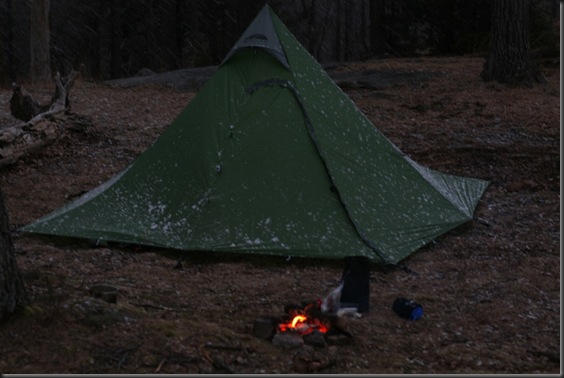
It was particularly wet snow, and it stuck to my clothing, getting me wet very quickly. Here you can see me trying to dry up in front of the fire before getting into the sleeping bad. The pants dried up fine, but the outer shirt did not. I had to take it off before getting in the bag.
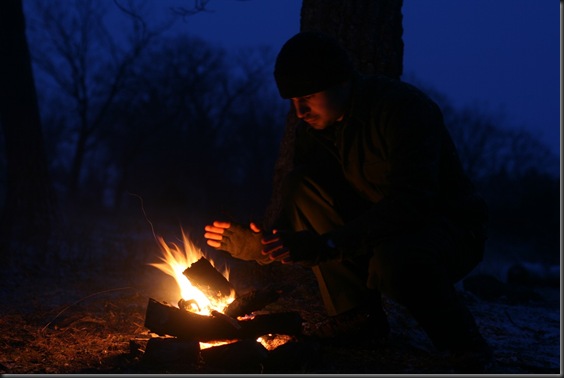
For the first few hours of the night there was a lot of wind and it continued to snow. Around 2AM however the wind died down, so I was able to get some good sleep.
When I got up, everything was covered with frost, including my sleeping bag and the inside of the tent. When it comes to the sleeping bag, the perspiration from your body passes through the bag, and then when it meets the cold air on the outside of the bag, it freezes. I scraped it off as best I could.
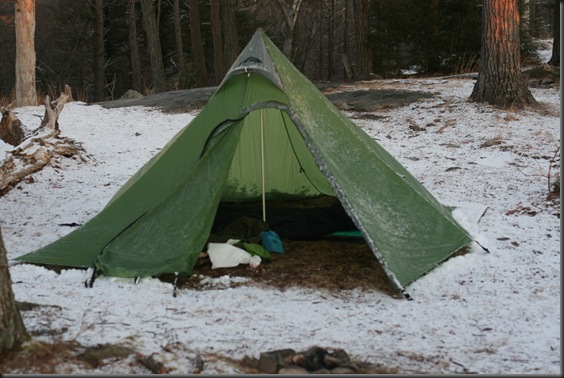
For breakfast, I made some oatmeal using the stove. The pump had frozen during the night, so I had to use a bit of force to get it to work.
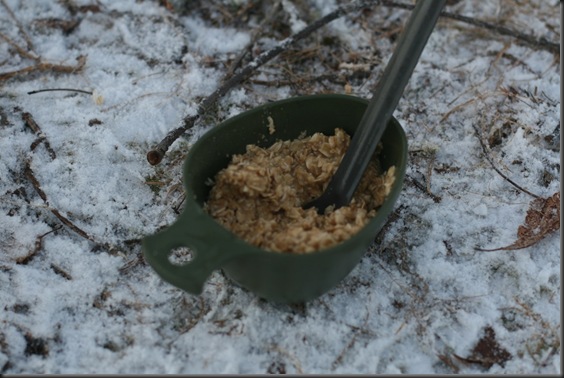
After breakfast I got on the go again. I reached the ridge line for which I was aiming and started following it.
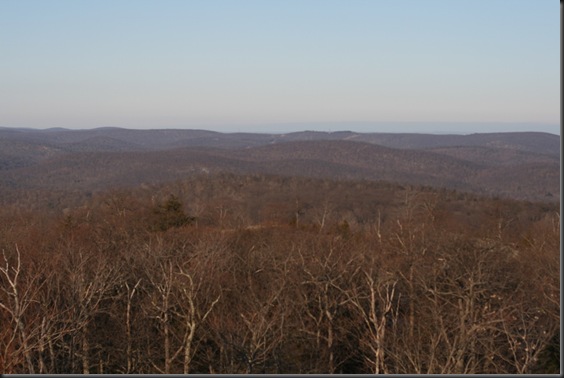
On one of the peaks I saw this geological survey marker. I have no idea what it means, but I thought it was kind of cool.
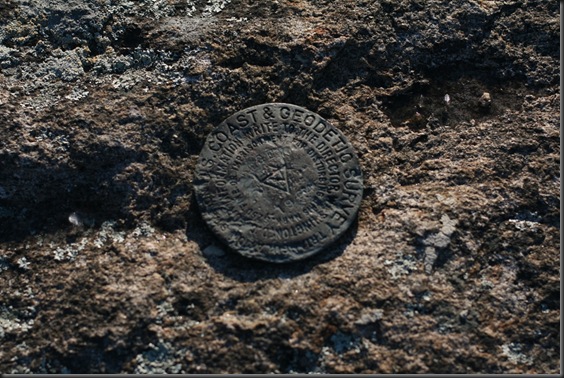
At one point I entered a small valley, where I found a small stream/swampy area. I took the opportunity to refill my water. The intake valve had frozen during the night, even though the filter was insulated. I hade to take it out and put it back in before the filter would start working.
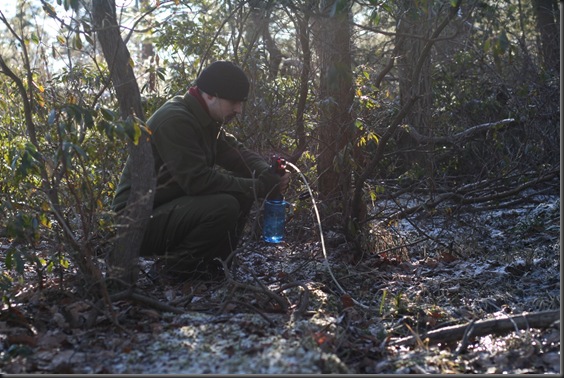
I also noticed that the water in my water bottle had frozen even though the bottle was in an insulated neoprene sleeve, and had been in my backpack for several hours.
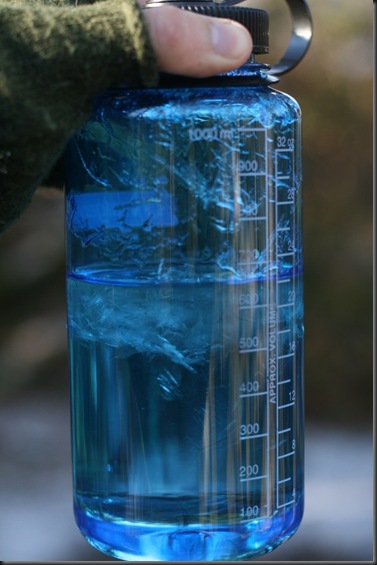
After that it was more hiking. Early in the afternoon I stopped for lunch-same as the previous day. I took the opportunity to make some more Gatorade.
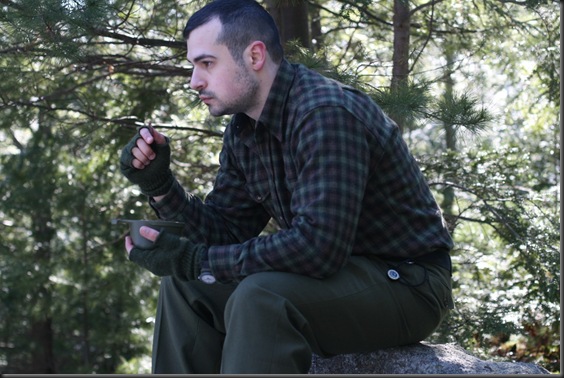
When I got to the area where I had intended to camp, I set up the tent. The frost on the tent had melted, and it was now wet, but it’s not an issue for this tent as it is an open floor design.
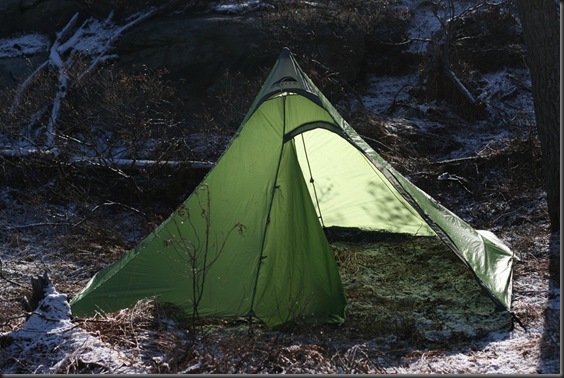
I was tired, and wasn’t planning on staying up in the evening, so I didn’t make a fire, and just used the stove to make dinner-same rice and ground beef as the night before.
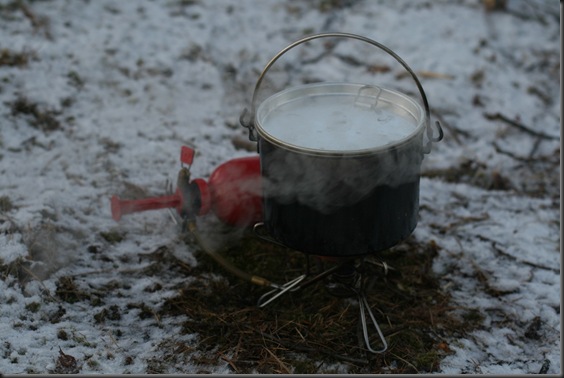
The night was uneventful. There was no more snow, and no significant winds. The temperature was low again, so I had the same frost issues, but was not cold at any point during the night.
The next day it was more oatmeal for breakfast, and I set off on my way back to the car.
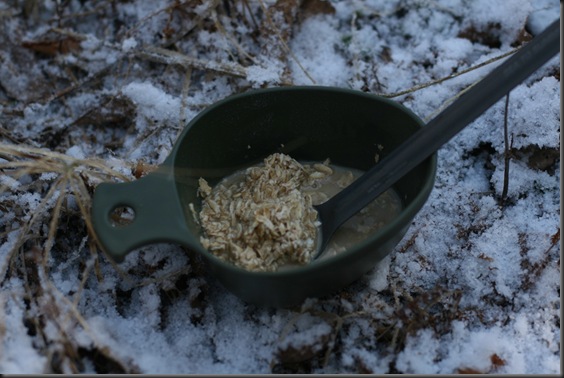
It looked like at the lower elevations there had been no snow, or maybe it had melted.
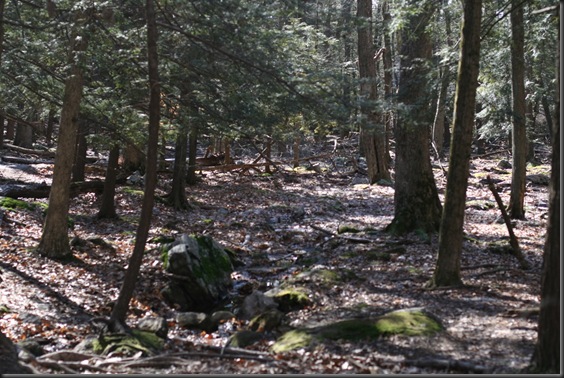
There was another old mine to check out on the way back.
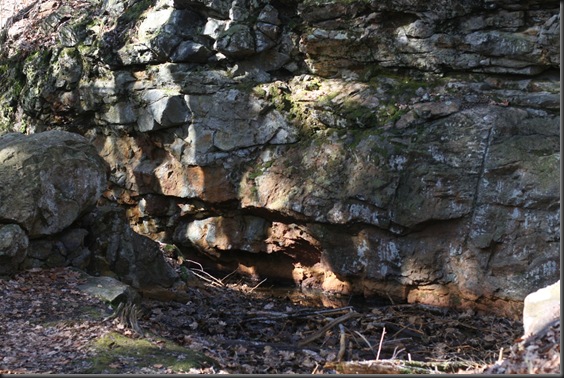
…and one last great view before I got back to the road. Well, I’m sure it’s much better during summer.
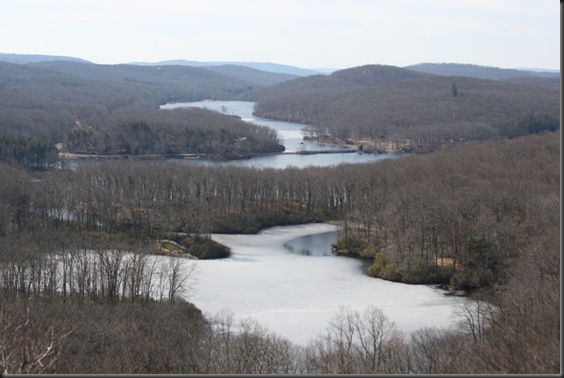
And that’s about it for my trip. I know that when I read trip reports, I always want to know more about the gear used, so I’ll try to make another post about that. This one is long enough as it is. :)
